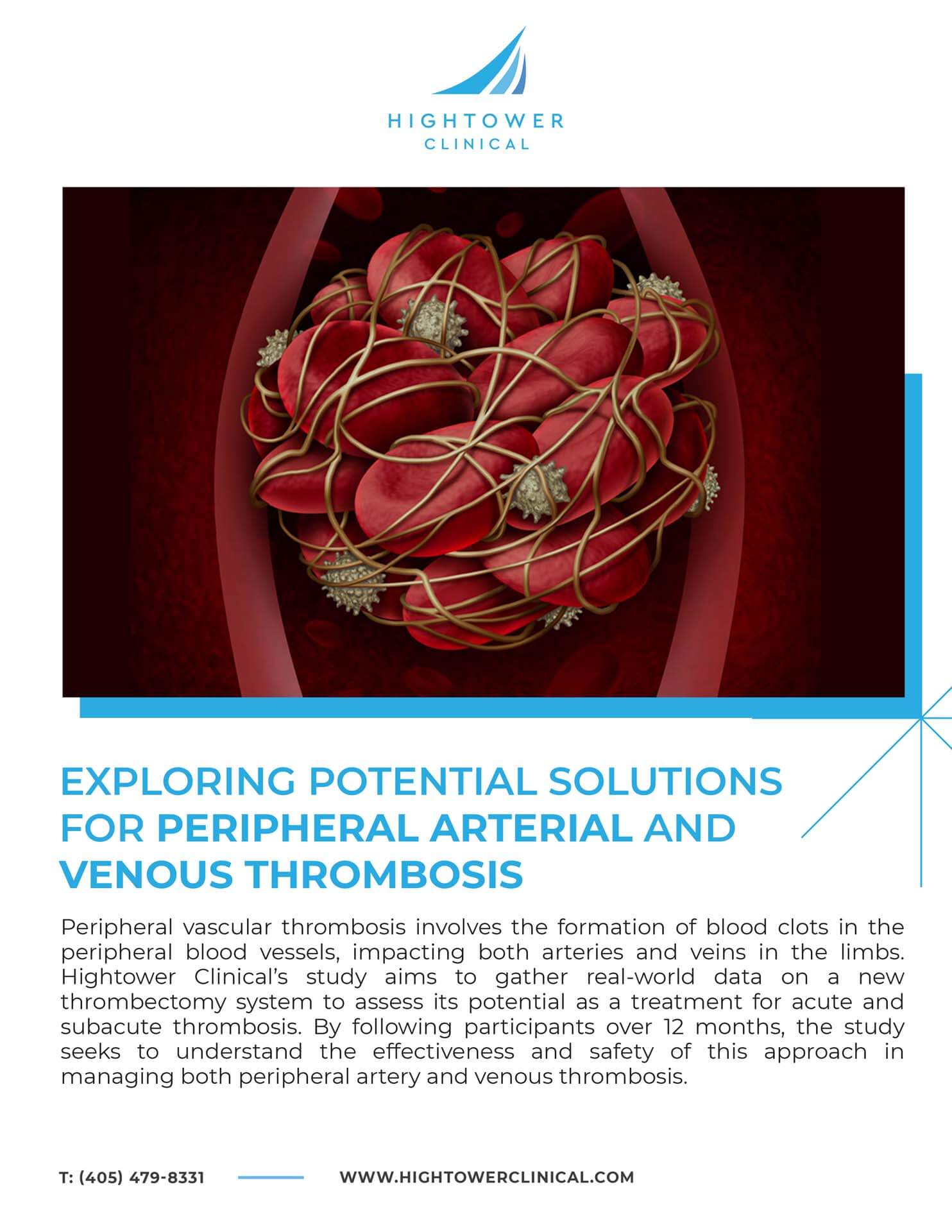Peripheral vascular thrombosis is the formation of blood clots in the peripheral blood vessels, which can affect both arteries and veins in the limbs.
Peripheral Vascular Thrombosis
Hightower Clinical past efforts were directed to real-world efficacy and safety of a device for treating peripheral vascular thrombosis.
About Peripheral Vascular Thrombosis Study
Peripheral vascular thrombosis refers to the formation of blood clots (thrombosis) in the peripheral blood vessels, including both arteries and veins. Peripheral Vascular Thrombosis encompasses conditions affecting blood flow in the limbs, whether in the arteries (as in PAT) or the veins (as in PVT).
Hightower conducted a study to gather real-world data on the JETi™ Hydrodynamic Thrombectomy System for treating acute and subacute thrombosis in the peripheral vasculature. By monitoring participants for 12 months, the study aimed to evaluate the long-term outcomes and effectiveness of the system in treating both peripheral artery and venous thrombosis.
Current Status
Not Recruiting
Study Count
1
Peripheral Vascular Thrombosis
| Study Name | Protocol Number | Sponsor |
|---|---|---|
| Peripheral Artery Thrombosis | Abbott |
Frequently Asked Questions
What are the risk factors for peripheral vascular thrombosis?
Risk factors include a history of blood clots, smoking, obesity, certain medical conditions like diabetes or high blood pressure, and prolonged periods of immobility.
What complications can arise from peripheral vascular thrombosis?
Complications can include pain, swelling, and tissue damage in the affected limbs, and in severe cases, it may lead to loss of limb function or increased risk of severe cardiovascular events.
Why should I participate in a study on peripheral vascular thrombosis?
Participating in a study can help advance medical knowledge, potentially improve treatment options, and provide access to new therapies or techniques for managing the condition.




